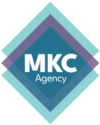Lead gen and demand gen are two commonly used terms in marketing that often get confused. While both aim to bring in potential customers, their approaches and focus differ. This blog will define and differentiate between these two marketing strategies.
Lead generation (lead gen) focuses on short-term acquisition of “leads” or contact information, such as email addresses. The content used in lead gen is often gated, meaning it is hidden behind a form or wall that requires the user to provide their contact information to access it. The audience intent for lead gen is generally low, as the user is forced to provide their information to access the content.
On the other hand, demand generation (demand gen) focuses on the long-term creation of demand as potential buyers drop in and out of the market. The content used in demand gen is often ungated, meaning it is free for all to consume and learn. The audience intent for demand gen is generally high, as the user seeks out the content to learn more.
It is important to note that both strategies are essential for a successful marketing campaign. However, the focus and approach differ. Lead gen is more about capturing contact information and driving short-term sales, while demand gen is more about building brand awareness, trust, and creating long-term demand.
To illustrate the difference, we’ll provide real-life examples of both lead gen and demand gen tactics. We’ll also share insights on how to measure ROI on your demand generation and lead generation strategies.
Lead generation examples:
- Gated content: Creating a valuable resource, such as an ebook or white paper, and offering it in exchange for contact information like an email address.
- Webinars: Hosting a webinar on a topic related to your industry and asking for registration information in exchange for access.
- Paid advertising: Running targeted ads on social media or Google Ads to drive traffic to a landing page where visitors can fill out a form to become a lead.
- Email marketing: Sending targeted and personalized emails to a list of contacts who have already expressed interest in your brand or product.
- Trade shows and events: Participating in industry trade shows or hosting your own events to capture contact information and generate leads.
Demand generation examples:
- Thought leadership content: Creating and sharing content that establishes your brand as a thought leader in your industry, such as blog posts, articles, or podcasts.
- Social media marketing: Building a strong social media presence and engaging with your audience to increase brand awareness and attract potential customers.
- Search engine optimization (SEO): Optimizing your website and content to rank higher in search engine results pages (SERPs) and attract organic traffic.
- Influencer marketing: Partnering with industry influencers to increase brand awareness and reach new audiences.
- Brand awareness campaigns: Running ad campaigns or creating content that introduces your brand to a wider audience and generates interest.
You can attract potential customers and convert them into qualified leads by combining lead generation and demand generation tactics. It’s essential to measure the success of your campaigns through various metrics, such as conversion rates, cost per acquisition, and customer lifetime value, to optimize your marketing strategy for maximum ROI continually.
At MKC Agency, we aim to prove that ethical marketing is as scalable and effective as legacy marketing practices. We pride ourselves on being a thought leader and a trustworthy, experienced marketing partner that can help customers make back more than 10x what they spend with us.
If you’re ready to take your B2B technology company’s marketing presence to the next level, we encourage you to contact us about a lead generation package. And, if you’re looking for proof that we can deliver on our promise, check out our Maitland MSP Case Study.
Don’t miss out on the opportunity to scale your marketing efforts with ethical practices. Contact us today to learn more about our lead generation package and how we can help you scale your marketing efforts with ethical practices.
Sources:
https://terakeet.com/blog/demand-generation-vs-lead-generation/
https://www.impactplus.com/blog/the-ultimate-guide-to-demand-generation
https://www.hubspot.com/marketing/demand-generation-vs-lead-generation
https://www.impactplus.com/blog/b2b-lead-generation-examples-strategies
https://www.smartbugmedia.com/blog/10-examples-of-effective-demand-generation-content
https://www.singlegrain.com/digital-marketing/demand-generation/what-is-demand-generation/
“Lead Generation vs. Demand Generation: What’s the Difference?” Act-On, 4 Dec. 2019, https://www.act-on.com/blog/lead-generation-vs-demand-generation-whats-the-difference/.
“What Is Demand Generation?” HubSpot, https://www.hubspot.com/demand-generation.


